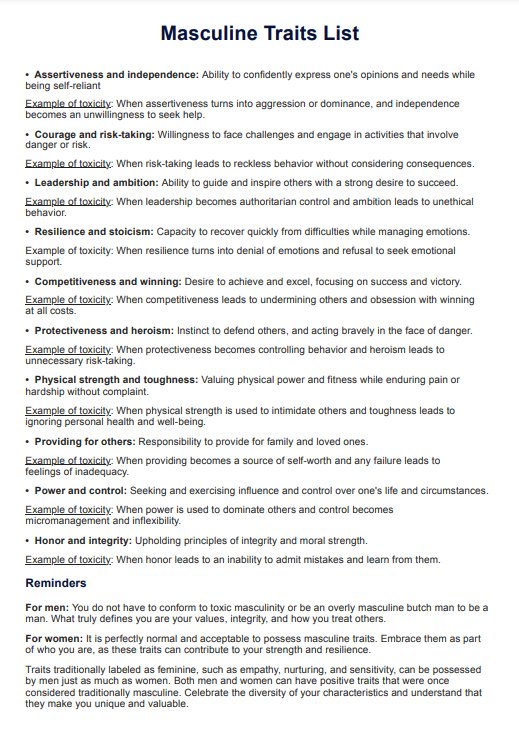Traditionally masculine behaviors include traits like assertiveness, independence, resilience, and competitiveness. These traits have been culturally associated with male dominance and the roles and expectations on men.

Masculine Traits List
Learn about masculine traits, when it starts becoming toxic, and how to use our template for encouraging balanced masculine behaviors.
Use Template
Masculine Traits List Template
Commonly asked questions
Masculine values often encompass strength, courage, responsibility, and the ability to protect and provide. These values have historically been emphasized in male socialization.
Good masculine behavior involves showing respect, empathy, and emotional intelligence while maintaining assertiveness and resilience. It's about balancing strength with sensitivity.
EHR and practice management software
Get started for free
*No credit card required
Free
$0/usd
Unlimited clients
Telehealth
1GB of storage
Client portal text
Automated billing and online payments











